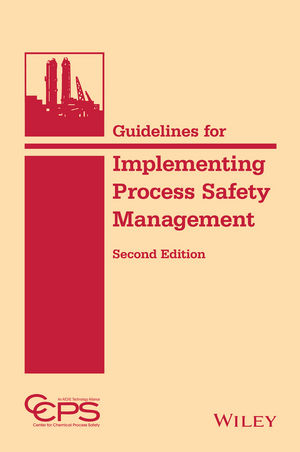EtQ – www.etq.com
People are key for any business to succeed—organizations need a workforce that is knowledgeable, skilled and mindful of the processes that drive daily operations. Many areas within the Environmental Health and Safety (EHS) industry in particular rely on extensive training and competency of the workforce in order to avoid any critical safety incidents. All employees must be trained in all processes to ensure the job continues to be done safely and effectively.
In addition to initial training, change management occurs on a daily basis. Processes change, new products are created and new work environments need to be set up. To keep up with this rapid cycle of change, a company must continually educate its employees and maintain that education to keep up with changing processes.
This is done through an automated training management program.
Many organizations already have training management procedures in place, in varying levels of complexity. From simple excel and word documents and manual logs to enterprise business systems—training needs to be tracked and maintained to ensure visibility and traceability of training events.
This article will look into how the EHS system can be used to automate the training management process.
The Need for Automated Training Management Systems
Training Management involves identifying training requirements, building training programs and flagging employees that need training. This is critical from a compliance standpoint. Without proper training, an organization risks noncompliance, safety issues and can also run the risk of liability due to operator error. To mitigate these risks, many companies have adopted automated Training Management Systems to manage and track the process of training employees.
The Benefits of Automated Training Management
There are often challenges faced with manual training processes—the training system greatly enhances the training process with capabilities that include:
- Consistency of Information: The Training Management System serves as a central location that houses a standard training program so that regardless of who comes into an organization, there is always a defined and consistent training program in place.
- Centralized Location for all Training Activities: The Training Management System tracks employee profiles, schedules training events, and manages the identification, responsibilities, authorities, training and certification requirements for all employees. It is a centrally located repository for managing and tracking training for the entire organization. It also provides a simple method of scheduling and recording training.
- Integrate Employee Data: An automated Training Management System can pull information from external business systems, such as Human Capital Management (HCM), to streamline data entry. For example, an organization can pull employee profiles into the Training System, which allows it to make sure all data is kept up to date and that there is no double-entry of data. The Training System can also group employees by department, operational area, function or facility. This ability to filter down and organize employee data is critical to keeping all employee data up to date and organized.
- Combine Cross-Functional Training Requirements: Most training events will cover a variety of departments and functional areas. Rather than break out these training events separately, it’s often more efficient to consolidate these events into requirement groups. This allows the business to organize training types—whether safety, quality or general requirement—into a cross functional training requirement group. This enables an organization to create a training plan that is streamlined, consistent and ensures that correct groups are receiving the right type of training.
- Automated Testing: Testing is a key aspect as it provides a quantitative measure that training was received and the employee has passed that training qualification process. Most Training Management Systems integrate testing into their training plans—pass/fail, percentage scores and others are common ways to accurately assess one’s ability to do their job.
Integration with Other EHS Tools
One of the areas in the business where training is most critical for compliance is within EHS. A trained staff can influence the level of compliance by operating in a safe manner. Integrating an EHS System with a Training Management System enables an organization to link critical safety activities to the training records. Here’s a glimpse into how integration with the following EHS processes can add another dimension to the training management initiatives:
- Document Control: The Document Control system is the central repository for job descriptions, processes, work instructions and the like. Employees must be trained when new documents are released, or revisions are made to existing documents. Document Control integration defines who needs training on each document, and automatically updates the training record for all employees once completed. Integration with Document Control also provides self-training and testing and will automatically update the status to reflect that training has been completed. The benefit here is that once a document is approved, training is automatically updated as well, thereby streamlining the transition from document approval to employee training on that document.
- Incidents and Corrective Action: If a safety incident or accident occurs, an organization can link investigations to the training record. This provides visibility into whether re-training is required, and ensures that there was prior training on a process related to that incident. This need can also arise out of a corrective action—linking training to a corrective action process can help to uncover any systemic training issues. Linking training records to the operational aspects of compliance increases visibility of the correlation between incidents and employee training.
- Reporting: The capability to report on the EHS helps provide greater visibility into compliance and how it potentially relates to training initiatives. From an operational perspective, the ability to see into the data and analyze trends and Key Performance Indicators (KPI) helps to improve the overall operation of an organization and mitigate risk. A Training Management System linked to this type of reporting will help to uncover key training trends as they relate to overall EHS compliance and can pinpoint deficiencies in training by correlating safety events with training effectiveness.
- Change Management: In any compliance system there will be responses to adverse events that may result in a corrective action. These corrective actions may yield change management activities in which an organization could have to change or rework processes. As a company conducts change management activities they will also need to factor in training on those processes that changed. Integrating training within change management in an EHS System helps to foster continuous improvement, not only in operational areas, but also in employee development.
Conclusion
Using Training Management within an EHS system enables organizations to eliminate the need for manual processes. It also greatly reduces adverse safety events that may occur as a result of inconsistent training.
The Training Management System provides the platform for a systematic method of training employees, re-training on new processes and mitigating risks in the enterprise. It provides a method of ensuring the consistent measurement of employee knowledge and effectiveness, leading to a highly-trained workforce and contributing to the overall success of an organization.



